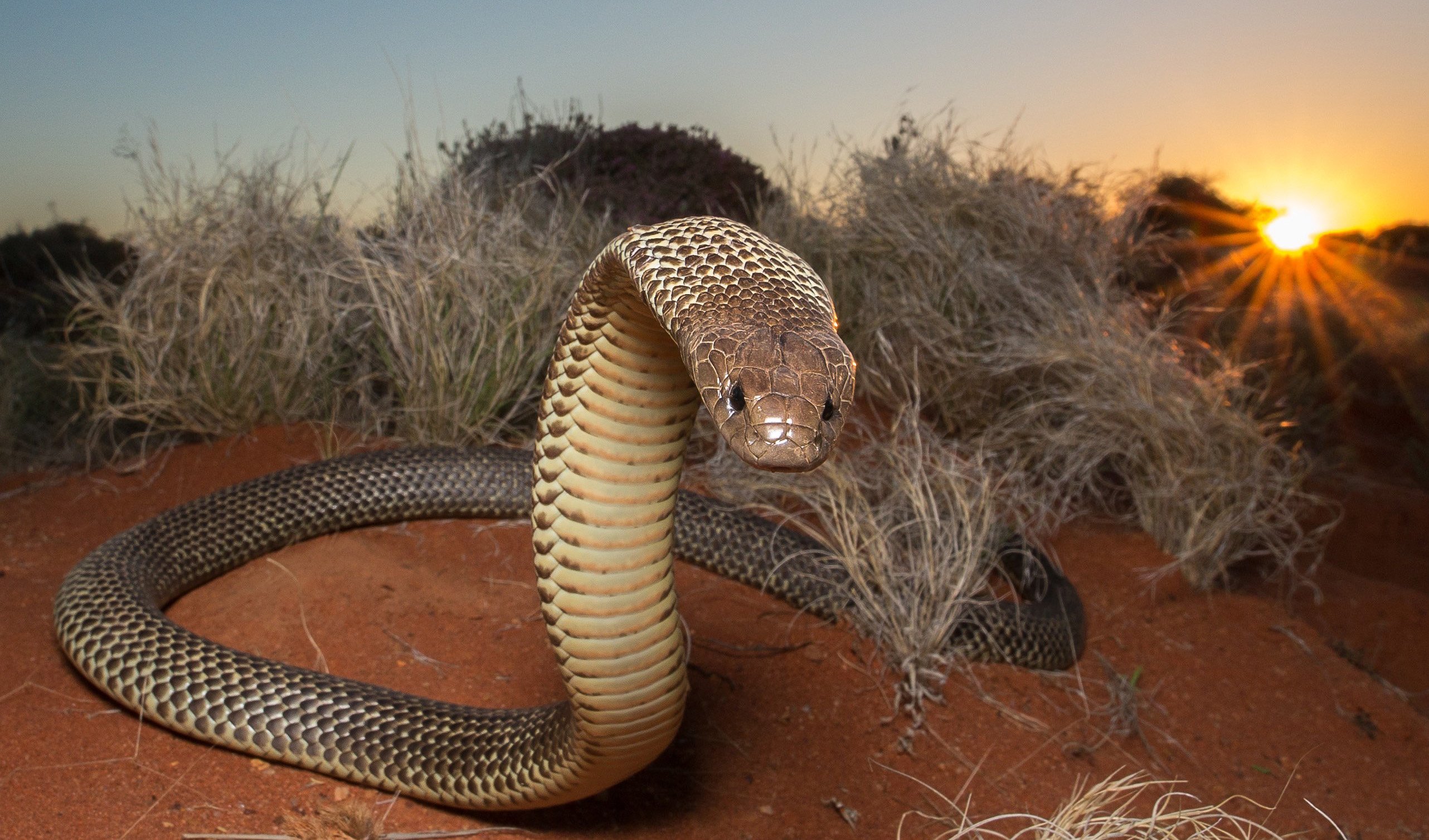Photographing Australia’s large, venomous snakes

Australia is home to 21 of the world’s most venomous snakes. And while most of us would steer clear of these fantastic beasts, photographer Ross McGibbon will often come within a metre of them to get the perfect shot.
As the snake stares down the lens and performs an intimidating defence display, Ross’s photography transports you into the belly of the beast; exactly what it would be like if you came face to face with a mulga snake or a western brown.

Ross tells Australian Geographic that capturing snakes and other reptiles up-close comes down to knowing your subject and knowing your equipment.
“Many hours of study goes into learning the habits, habitat type and distribution of the species I am targeting. If you know where they live and what time of day or night they are active, then you increase your chances of being presented with an opportunity.”

To this day, Ross’ favourite image is of a mulga snake he captured in the Great Victoria Desert in Western Australia. When it was posted on social media, audiences were amazed.
“As we approached the snake became quite defensive rearing up with its neck flattened like a cobra… After a flurry of shots while trying to keep out of striking range I reviewed my photos and was extremely pleased at the result.
“I had captured this impressive snake in an equally impressive pose with all of the elements of the desert habitat and setting sun. Some of the best shots come from moments of spontaneity that only wildlife can gift you.”
By capturing these venomous snakes in their natural habitat, performing instinctual behaviours, audiences are given unique insights into snakes they may only ever see at zoos.
“Seeing wildlife in enclosures and zoo’s has never been my thing. I draw great satisfaction from locating and observing them in their natural habitat. When you spend so long researching a particular species and investing a lot of your time and money into finding them in the wild, there is no better reward than to capture the moment and share it with others.”

A bad reputation
Ross refers to reptiles as the least popular ‘kids in class’ when compared to birds, mammals and marine life, which he says can be put down to lack of information and fear based journalism.
“Compared to an average of 10 deaths per year attributed to Bee’s, and 20 deaths per year from horses, snakes rank very low as a cause of death in Australia, yet we don’t go around chopping of horses heads and hitting bee’s with shovels because we think they are dangerous.”
Ross has a strong online presence that he uses to better inform people about venomous snakes and other reptiles.
“Social media is a powerful tool and those of us who study and understand snakes are using it to promote education and awareness, offering the public an alternative source of information to the previous fear based media stories and the guy at the local pub telling war stories of how a king brown ‘chased’ him.”
To see more of Ross’ photography you can follow him on Instagram and visit his website.




